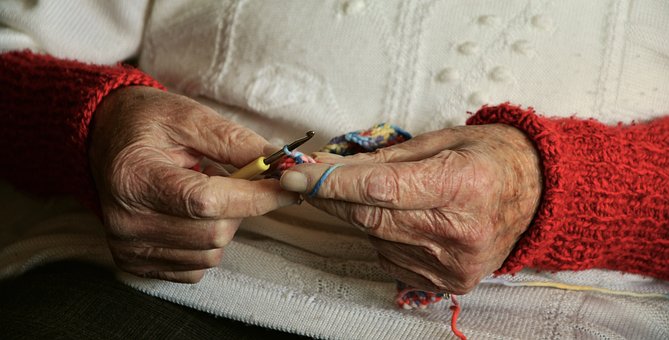 Do you like to crochet? I do. I've been known to use older patterns so I can recreate fine lace for my historical recreations. I love the look but I'll tell you that trying to read the patterns can sometimes be difficult due to they way they are written and the fact I have to use extremely fine thread. I"m not the best crochet person and I don't always have the time I want to spend on it but its fun.
Do you like to crochet? I do. I've been known to use older patterns so I can recreate fine lace for my historical recreations. I love the look but I'll tell you that trying to read the patterns can sometimes be difficult due to they way they are written and the fact I have to use extremely fine thread. I"m not the best crochet person and I don't always have the time I want to spend on it but its fun.
The word crochet is derived from the French word "croche" meaning hook. It is thought that crochet might have evolved from a Chinese embroidery, the forerunner of Tambour in the 1700's. Tambour uses a hook which is used to bring yarn or thread from the back of stretched fabric to the front, creating a loop. It is believed the background material used in Tambour was discarded so that people created the needle work in the air. No one is really sure where it originated nor how it spread across the world because there is no real evidence of the craft before it gained popularity in the 19th century Europe.
Although the first printed crochet patterns appeared in 1824, it is believed that women shared crochet patterns long before this point. It is thought they shared the patterns verbally but this resulted in inaccurate replication of the original patterns so the practice of creating small samples that could be stitched into a book and replicated with more accuracy. These books could then be shared more easily. People have found books like this dating back to the early 19th century.
The first printed crochet patterns were for luxury items such as purses made of gold or silver thread. Crochet took off when Mlle. Riego de la Branchardiere was able to successfully translate patterns for needle and bobbin lace into crochet patterns. This lead to her publishing many pattern books used by women to make their own crochet. Furthermore, it is said, this lady also created the "Lace Like" crochet also known as "Irish" crochet.
This type of crochet turned out to be a life saver for the Irish during the potato famine. Men, women, and children were organized into cooperatives so they could make crochet which was then sold overseas. It brought money in so people were able to survive long enough to save e money to immigrate to the United States. It is said that two million left Ireland for the United States between 1845 and 1859.
Small stitched books were not the only way women shared patterns. Sometimes, they crocheted samples into one long thing bands so they could refer back to them. Often these bands accumulated patterns over the years. In Victorian times, women made bird cage covers, flower pot holders, baskets for visitor's cards, lamp shades, and so much more. By 1900, women were crocheting afghans, assorted rugs, cushions, hot water covers, and the crocheted pot holder made its appearance during this time.
During the 1960's and 70's free from crochet took off and people began creating 3 dimensional sculptures, clothing, or tapestries. This has lead to complex and intricate patterns for people to make.
No comments:
Post a Comment